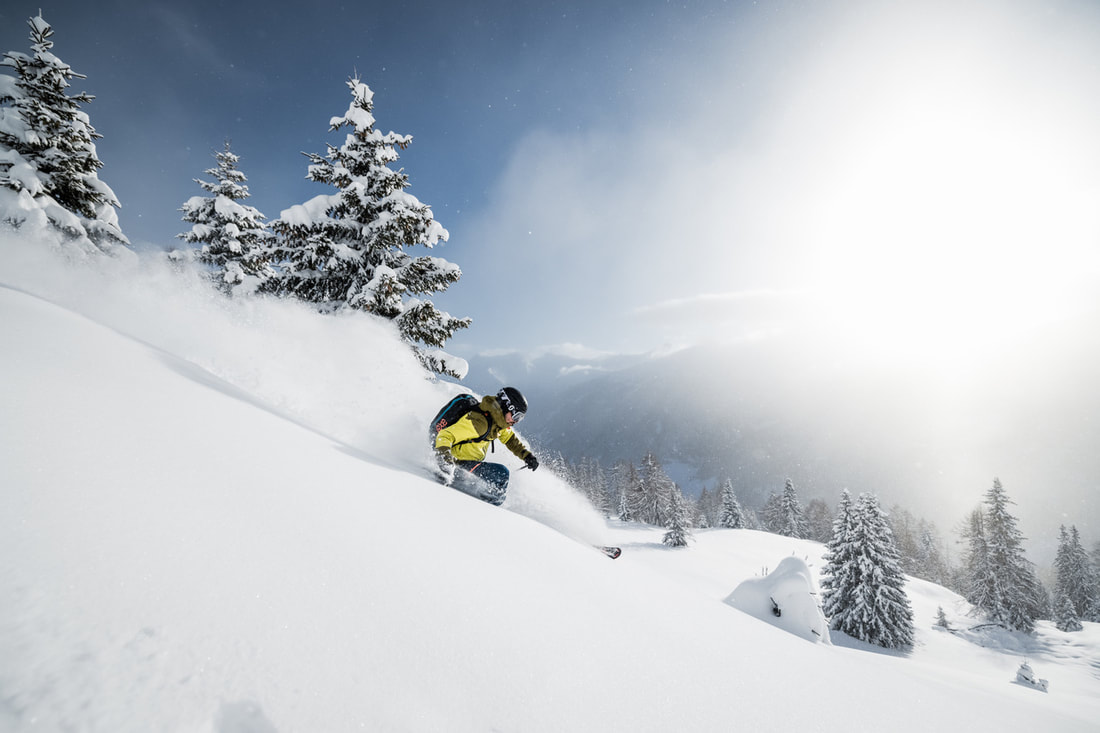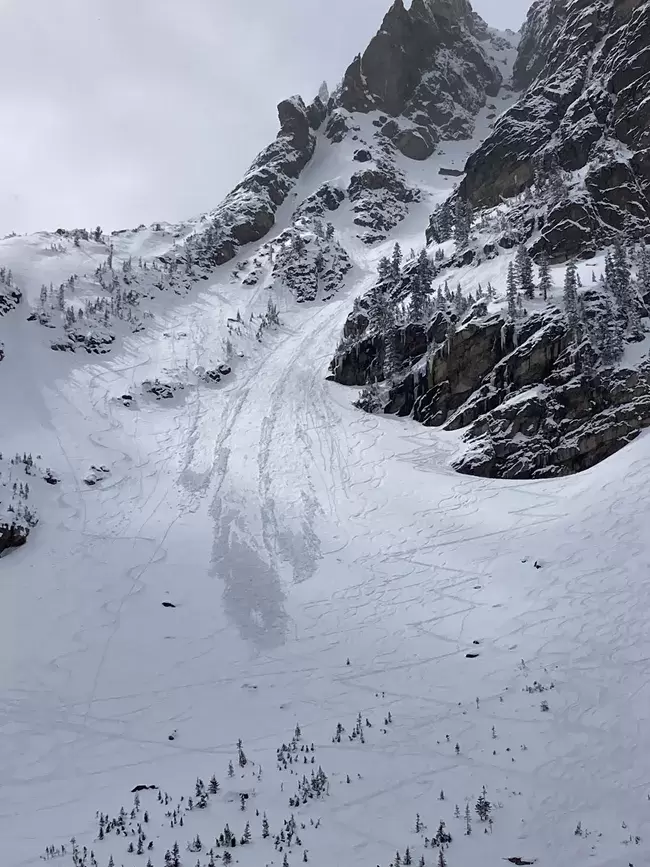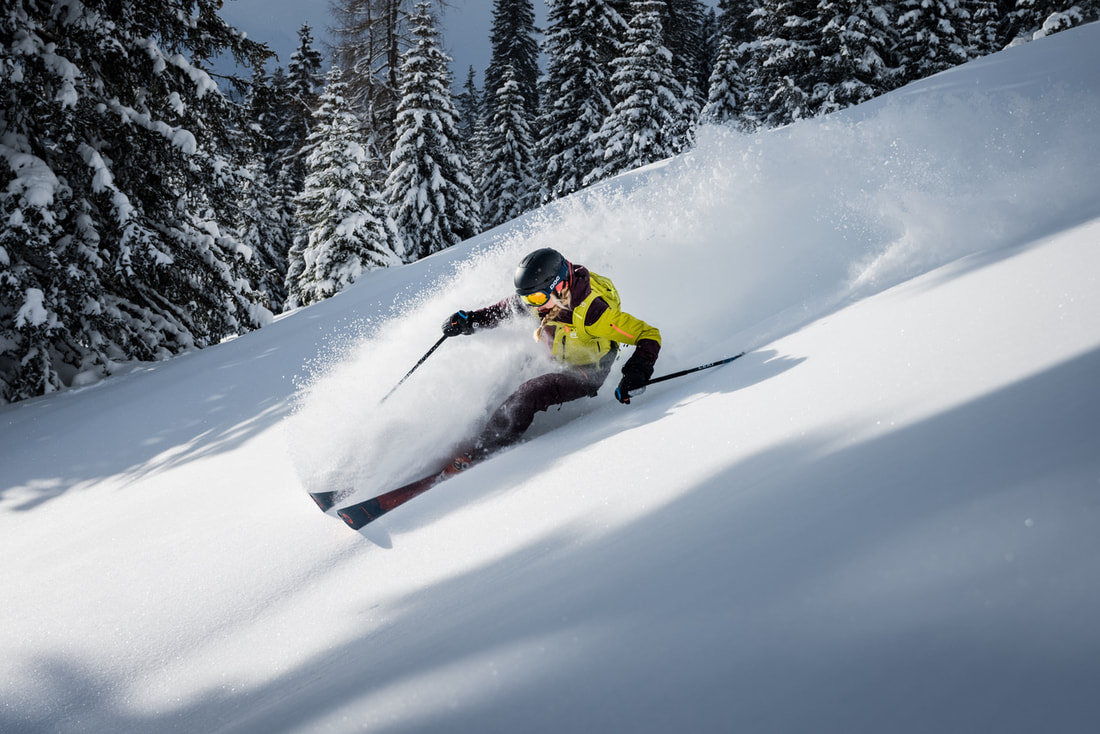|
by Murray Selleck, HIKE ROCKY's gear specialist Editor's note: HIKE ROCKY receives no compensation for any of the gear included in Murray's gear recommendations. 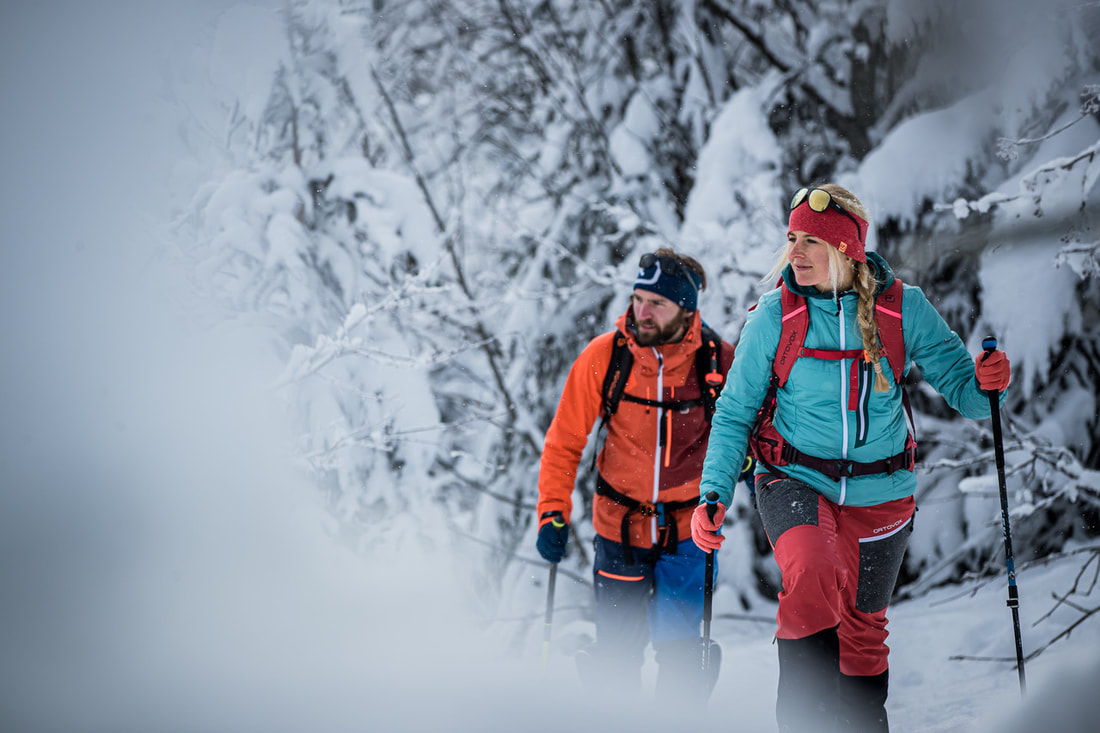 Photo by Photo by Hansi Heckmair/used with permission from #Deuter Photo by Photo by Hansi Heckmair/used with permission from #Deuter It’s a beautiful winter day, the sun is out, the sky is blue, the snow is fresh and incredibly bright, you’re with friends, and it seems like the possibilities of the day are limitless. Many skiers will look to make laps harvesting a perfectly magical slope with alpine touring, telemark, or splitboard equipment. Funny, do you see how all the trees on this slope have no uphill branches? Many more backcountry enthusiasts will snowshoe or hike up into tempting snow globes, looking for valleys filled with amazing winter scenery. Holy cow! Look at all those snow cornices above us on that ridge! Or how about a great cross country ski tour through a winter wonderland with perfectly-gladed trees? What was that whumpfing sound? Did you see the snowpack settle a few inches? And look at this crack in the snow! Where did that come from? Oh, the winter backcountry is so compelling. It sings to you to get out and play in it. You might even compare it to Ulysses and the Sirens… there is beauty and attraction but there is an element of risk and danger as well. There’s no need to tie yourself to a mast or stay indoors all winter to play it safe. There are lots of ways to enjoy the winter backcountry on the equipment you love best while staying safe. It all begins with being equipped, prepared, practiced, educated and skilled. Equipped and Prepared Winter backcountry enthusiasts go into the high country ready for anything the day may bring. A backcountry day may begin with nothing but blue skies but it can quickly turn into an unexpected blizzard! If you are planning on skiing, making turns and harvesting a backcountry slope, you should not only carry the three essential avalanche rescue tools (shovel, beacon, and probe) but the 10 Essentials by The Mountaineers. 1 - Navigation (map, gps, compass or something similar) 2 - Headlamp plus extra batteries 3 - Sun protection 4. First Aid Kit 5. Knife or multitool 6. Fire starter, matches, kindling 7. Emergency Shelter 8. Extra food. 9. Extra water or bring a filter or have the means to melt snow for water 10. Extra clothes, additional base layers, extra gloves, hat, and maybe even extra socks! Avalanches aren’t isolated just to those dramatic avalanche shoots beginning above timberline. They can occur on just about any slope, whether it is wide open, or treed, or steep, or moderately pitched. Small slides that run only a few feet can knock you off balance and bury you. Avalanches do not discriminate. They don’t care if you are on skis, snowboards, snowshoes, or snowmobiles. Even if your day includes skiing terrain that you think has no potential to slide you should still consider carrying a shovel, beacon and probe along with the 10 Essentials. No one plans on spending a cold winter’s night out but it can happen to the best of us. How many times have we heard of a person in the backcountry getting hurt or lost and spending a miserable night out unprepared? Will you be geared up and prepared? Unfortunately, we also consistently hear about people not telling anyone where they are going or when they plan on returning home. If no one knows where you are, how can you expect to get help if you need it? Don’t depend on cell phone coverage to help you out of a situation. Think about all the potential “what ifs.” Let someone know where you’re going and when you expect to be back even if you think your outing will only last a couple hours. Remember a guy named Gilligan? 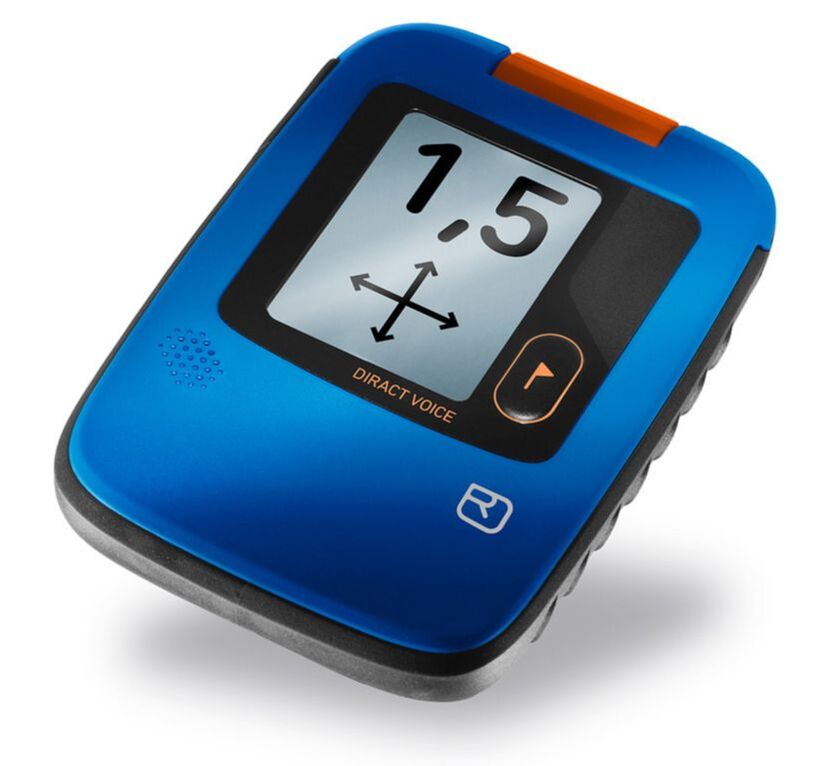 The Ortovox Direct Voice Transceiver is the only transceiver on the market with a voice command feature. A calm and authoritative voice guides you in the right direction to find a buried partner. Other features on the Ortovox Direct Transceiver include a rechargeable lithium battery, 50-meter search distance, easy-to-read display even in bright sunlight, three antennas, product system updates via an app, and an automatic switch from receive to transmit if a secondary avalanche traps a search member who then needs rescuing. Practiced and Skilled Bringing the right gear and wearing the right clothing is always good practice but only if you know how to use your gear and wear the right kind of layers (NO COTTON!). What is the point of carrying an avalanche beacon if you don’t know how to use it? Have you taken an avalanche course? Have you practiced and do you continue to practice with your beacon and ski partners? Do you and your partners test your beacons each time you leave the trailhead parking lot to make sure everyone’s beacons are working properly? How about shoveling? Have you used your shovel to dig a snow pit to identify weak layers in the snowpack? Do you know how to carve out a snow cave or build a snow shelter like a Quinzee hut for shelter or just for fun? Shoveling is hard work. 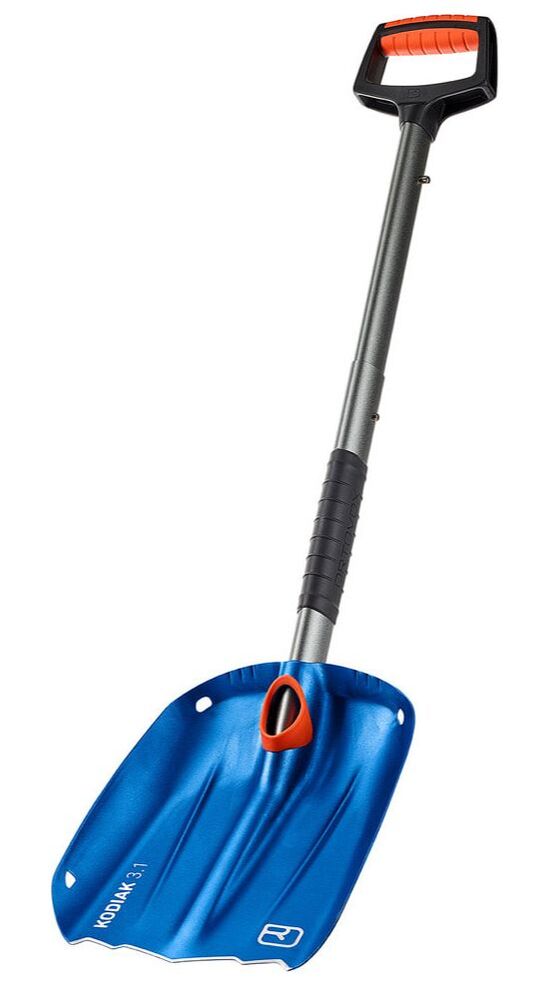 Ortovox Kodiak Shovel: Digging and shoveling snow is hard work, especially through avalanche debris. In a rescue, snow needs to be moved fast and it is certainly not the time to discover carrying the smallest and lightest shovel is no longer to your benefit. The Ortovox Kodiak is an excellent first-choice shovel. The Kodiak’s blade size will move 3.1 liters of snow fast with each motion. The cutting edge of the blade is sharpened so it won’t deflect off blocks of snow. The Kodiak offers two blade positions. The first is the more traditional shovel shape. The second attaches the blade at a 90 degree angle creating an effective clearing motion… similar to a garden hoe. One person can dig and another person can clear the first person’s snow down and away. The Kodiak’s handle shaft is oval shaped to resist spinning and offers a solid connection between shaft and blade. This shovel is also practical for digging snow pits, snow shelters, or even just to have in the car in case you get stuck. Avalanche debris sets up like concrete. Even digging out a snow cave is sweaty work. And do you have extra layers of clothing including extra gloves to replace your wet layer with dry ones once the shoveling is done? Carry an avalanche probe not only for a rescue situation but use your probe to feel the snowpack on your ski or snowshoe tour. Probe the snowpack along the way and on different slope aspects. You will feel where the soft or crusty or hollow layers of snow that are within the snowpack. This is a quick and easy technique that only adds to your snowpack knowledge.  Ortovox Probes A probe allows for pinpoint location of a buried ski partner. Once you’ve located someone buried in an avalanche with your transceiver, a probe will pinpoint the location and also reveal the depth of the burial. All Ortovox probes assemble quickly with one pulling motion. They come with an oversized tip to improve snowpack penetration and reduce probing friction. They are both light enough and stout enough to probe without deflecting or collapsing. The probes have easy- to-read depth markers which provide valuable information regarding shoveling strategy. Ortovox probes come in several models and lengths from 240cm to 320cm. Do you know how to use your ski equipment? I’ve seen a few folks only steps from the parking lot struggling with their alpine touring bindings, split board bindings, and even XC bindings. The trailhead parking lot is not the place to discover you don’t know what you’re doing! Educated is also being skilled and experienced. A great place to start is the Colorado Avalanche Information Center (CAIC). Here you can sign up for courses to learn how avalanches form, what triggers them, nature’s red flags to look out for, and most importantly, how to avoid avalanches in the first place. The CAIC publishes excellent (and accurate) weather forecasts and posts current avalanche conditions. They offer many additional links through their website to help you gain knowledge and be safe. Avalanche awareness information from Rocky Mountain National Park can be found here. Prepared winter enthusiasts have a practical knowledge of the snowpack’s history including past storm cycles, significant temperature fluctuations between winter storms, and significant wind events. They know the current avalanche forecast and conditions by checking in with the CAIC both the night before they leave and the morning of their trip. And they know how to enjoy a winter’s day and avoid trouble even when avalanche danger is high or extreme. Being educated, skilled, and experienced will help you recognize the warning signs of suspect terrain and the inherent weakness of the Colorado snowpack. If you are brand new to exploring the winter backcountry, find willing knowledgeable partners that can share their expertise with you. Better yet, if you're new to the winter backcountry, you could sign up and take a few avalanche courses or backcountry skills classes to be better prepared to eventually strike out on your own. Avalanche or backcountry skills courses will teach you what causes avalanches, how to avoid them, or in worst case scenarios, what to do in a rescue situation. All of this may sound daunting to the point of asking yourself why even bother going into the winter backcountry? Well, we go for the absolute joy of being outside in the winter. We go for the absolute beauty of a winter backcountry day. And of course, we go for the fun! Mother Nature provides us with plenty of clues that let us know how weak or safe the snowpack is. Experience opens your eyes and ears and keeps you safe. Here are a few of the RED FLAGS Mother Nature provides us all winter long:
This article barely touches on all the things a winter backcountry user should know, bring, and trust. There is much to learn about being avalanche aware and being safe in the backcountry. There is no substitute for education, taking classes, and continually practicing what you learn. No one will ever tell you not to explore the winter backcountry, however, everyone will tell you to be safe! 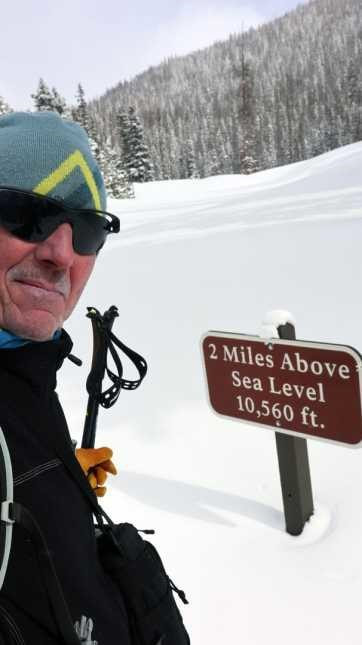 Murray Selleck moved to Colorado in 1978. In the early 80s he split his time working winters in a ski shop in Steamboat Springs and his summers guiding on the Arkansas River. His career in the specialty outdoor industry has continued for over 30 years. Needless to say, he has witnessed decades of change in outdoor equipment and clothing. Steamboat Springs continues to be his home. This piece of independent journalism was made possible by Brownfield's and the Country Market of Estes Park. To find out how to be a HIKE ROCKY business partner, call 970-449-2620
0 Comments
Leave a Reply. |
Categories
All
|
© Copyright 2025 Barefoot Publications, All Rights Reserved

